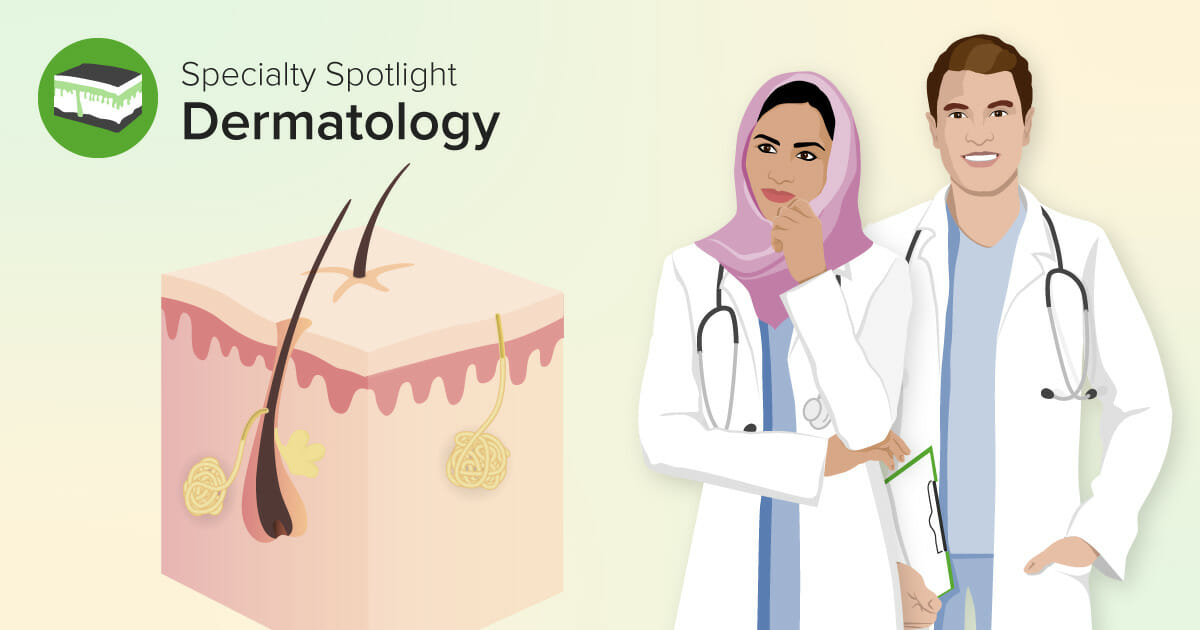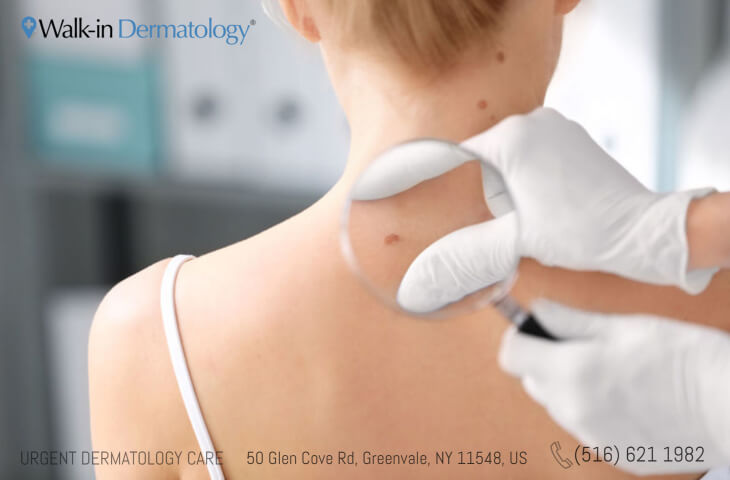Thorough Dermatology Expertise: Addressing Acne Issues, Mole Problems, and Dermatitis Symptoms
When it concerns skin wellness, comprehensive dermatology understanding is crucial; it encourages people to deal with usual skin issues such as acne, mole abnormalities, and dermatitis with confidence. Comprehending acne treatments, recognizing prospective skin cancer cells check in moles, and taking care of dermatitis triggers can significantly enhance skin wellness - skin cancer check. This short article will explore these subjects, using an insightful check into the scientific research behind these usual skin concerns - an expedition that promises to enlighten and notify
Understanding the Fundamentals: What Is Acne, Moles, and Dermatitis?
Acne is a skin problem identified by inflamed or contaminated oil glands, typically visible as acnes or spots, mostly on the face, back, and chest. Moles, on the various other hand, are little skin growths triggered by clusters of pigmented cells; they can show up anywhere on the body and differ in shade and size.
The Science Behind Acne: Reasons, Types, and Treatments
The complicated science behind acne starts with comprehending its formation system. This complex process, influenced by various variables, results in various kinds of acne. The short article will additionally discuss effective treatments available to handle and treat this common skin problem.
Acne Formation Device
An overwhelming majority of people will certainly experience the common skin problem understood as acne at some point in their lives. Acne development begins with the overflow of sebum, an oily material produced by sebaceous glands in the skin. When these clogged up pores become infected with Propionibacterium acnes, a microorganism normally present on the skin, swelling happens, resulting in noticeable acne.

Effective Acne Therapies
Almost every person will certainly grapple with acne eventually, making a clear understanding of reliable acne therapies important. Various therapies target various facets of acne, such as swelling, oil manufacturing, and bacteria. Topical therapies like benzoyl peroxide and salicylic acid can remove microorganisms and unblock pores. Antibiotics can combat swelling and microorganisms. For severe cases, isotretinoin, a powerful medication, can reduce oil production. Non-drug therapies include light treatment and chemical peels. It is necessary to bear in mind that not all treatments will function for every person, as acne's reasons and severity differ. Therefore, dermatologists usually tailor therapies to private requirements. Regular use the selected therapy and perseverance are vital to seeing improvement.
Mole Matters: Recognition, Exam, and When to Look For Clinical Interest
Moles, usual skin growths, require careful recognition and routine examination for optimum skin health (acne treatment). Recognizing the typical appearance of one's moles, in addition to any type of modifications that might happen, is vital. Prompt medical focus must be sought when particular indications, which will be gone over, are detected
Recognizing Mole Identification
Exactly how does one compare a harmless mole and one that may require medical focus? First, understanding the features of normal moles is critical. A common mole is normally round or oval, has a smooth edge, and is no bigger than 6mm in diameter. The shade must be constant and can differ from pink, tan, brown, or black. Moles typically appear during childhood or teenage years, and by their adult years, most individuals have between 10 to 40 moles. Moles that transform in size, form, or shade, become itchy or hemorrhage, or show up after age 30 can be disconcerting. These abnormalities do not instantly show skin cancer cells however are reasons to speak with a skin doctor. Comprehending mole recognition is the very first step in skin health monitoring.
Performing Routine Mole Assessments

Identifying Crucial Clinical Signs
When should one look for medical attention worrying moles? It is important to get in touch with a dermatologist when unusual features are seen. These might consist of asymmetry, irregular borders, differing shades, a diameter larger than 6mm, or evolving size, form, or shade. Known as the ABCDE's of mole examination, these adjustments might aim to malignant melanoma, a lethal form of skin cancer cells. In addition, any type of blood loss, itching, or non-healing sores connected with moles demand instant medical interest. An individual ought to additionally be cautious if new moles appear after the age of 30 or if there's a sudden rise in the number of moles. Routine soul-searchings matched with reference expert assessments make sure very early discovery and effective therapy of prospective skin problems.
Eczema Explained: Causes, Symptoms, and Taking Care Of Flare-Ups
Although eczema may show up as a basic skin irritability to the inexperienced eye, it is, in fact, an intricate dermatological condition with a multitude of possible reasons. Dermatitis, additionally referred to as atopic dermatitis, is normally caused by a combination of genetic and environmental aspects. Taking care of dermatitis commonly includes determining and staying clear of triggers, preserving a great skin treatment routine, and making use of prescribed therapies.
Practical Skin Care Tips to stop and Manage Acne, Moles, and Dermatitis
Recognizing and resolving skin disease such as acne, moles, and eczema call for functional and efficient skin treatment routines. Routine cleaning with gentle, non-irritating products aids preserve skin health and wellness and protect against acne. Sun block application decreases mole risk and reduces eczema flares activated by sunlight direct exposure. Hydrating, specifically for those with eczema, is important to keep skin hydration and obstacle function. A well balanced diet plan abundant in antioxidants can boost skin health and wellness and lower inflammation, possibly reducing acne and eczema intensity. Routine skin checks aid in very early mole discovery, possibly avoiding skin cancer cells. While these tips can reduce skin issues, they're not a replacement for professional dermatological recommendations. Always get in touch with a skin specialist for persistent or serious skin conditions.
Expert Dermatology Treatments: A Review of Modern Solutions
Dermatologists today have a vast variety of effective therapy alternatives to deal with different skin problems. With moles, professional elimination is performed if they posture a wellness additional info threat. All these treatments are under the specialist assistance and care of dermatologists, making sure risk-free and effective management of skin problems.
Conclusion
Acne monitoring requires understanding of various treatment choices, while mole exam can lead to early discovery of skin cancers. Extensive dermatology knowledge is essential for preventing and handling these skin problems, emphasizing the requirement for expert skin specialist treatment to enhance skin wellness.